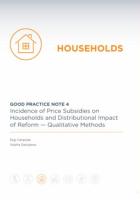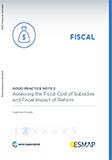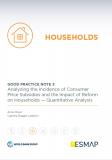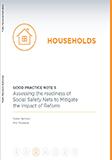Publications
This is the fourth in the series of ten good practice notes under the Energy Sector Reform Assessment Framework (ESRAF), an initiative of the Energy Sector Management Assistance Program (ESMAP) of the World Bank. ESRAF proposes a guide to analyzing energy subsidies, the impacts of subsidies and their reforms, and the political context for reform in developing countries.
This good practice note provides those working on consumer price subsidy reforms, in particular social scientists, with hands-on, practical guidance for using certain qualitative research tools to help fully understand the distributional impacts of higher prices on households. It focuses primarily on the direct effects of energy price subsidies (that is, higher energy prices), which are especially pronounced in middle-income countries.
The good practice note aims to illustrate how qualitative research tools—focus group discussions and in-depth interviews—can be utilized in the context of energy subsidy reforms. By using such tools, this note aims to guide researchers and policy advisers to better understand the energy use behavior of households, the impacts of higher energy prices on their lives, the ways households may adjust their energy use behavior in response, and the consequences of such coping strategies.
Other Good Practice Notes in this Series:
Canpolat, Ezgi; Georgieva, Sophia. 2019. Energy Subsidy Reform Assessment Framework: Incidence of Price Subsidies on Households and Distributional Impact of Reform — Qualitative Methods. World Bank, Washington, DC. © World Bank. https://openknowledge.worldbank.org/handle/10986/31154 License: CC BY 3.0 IGO




